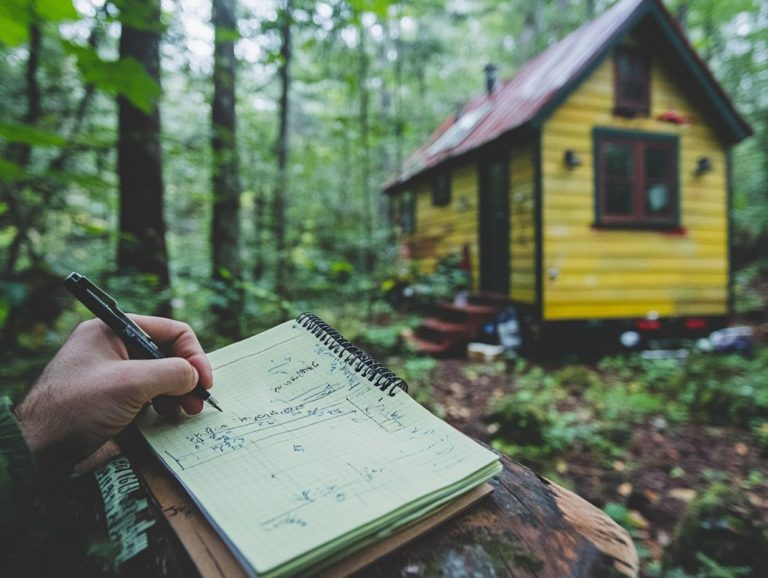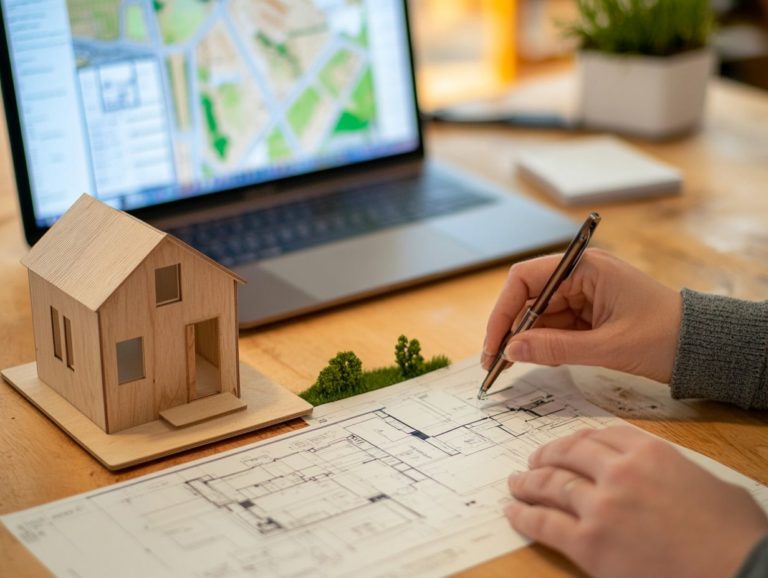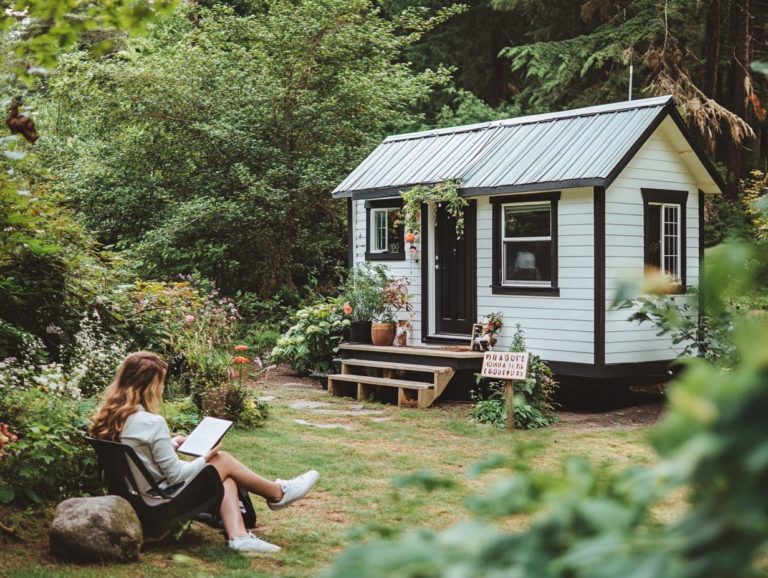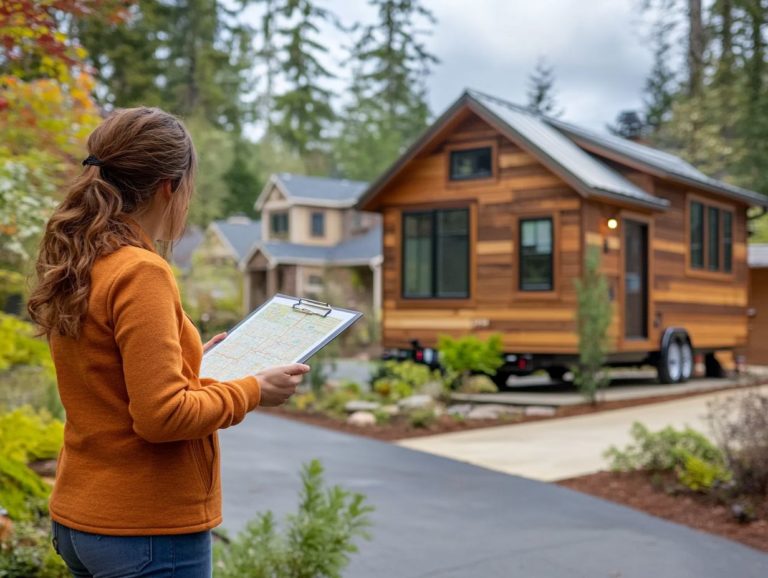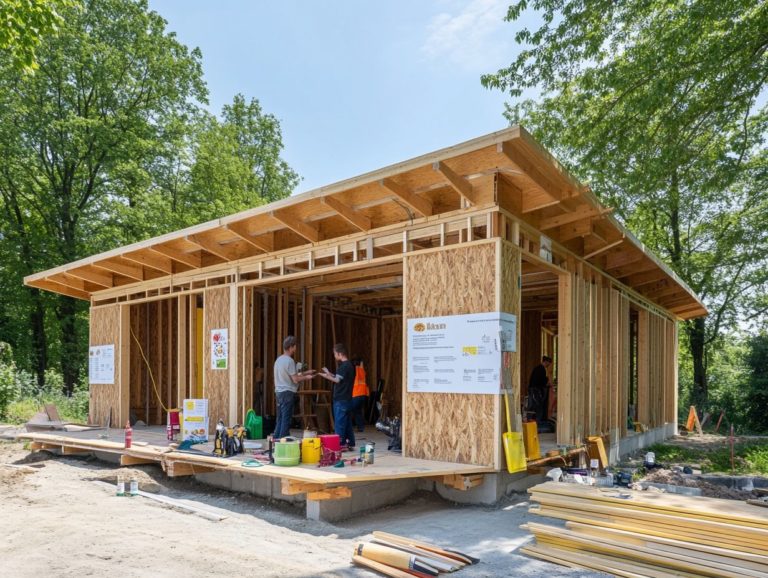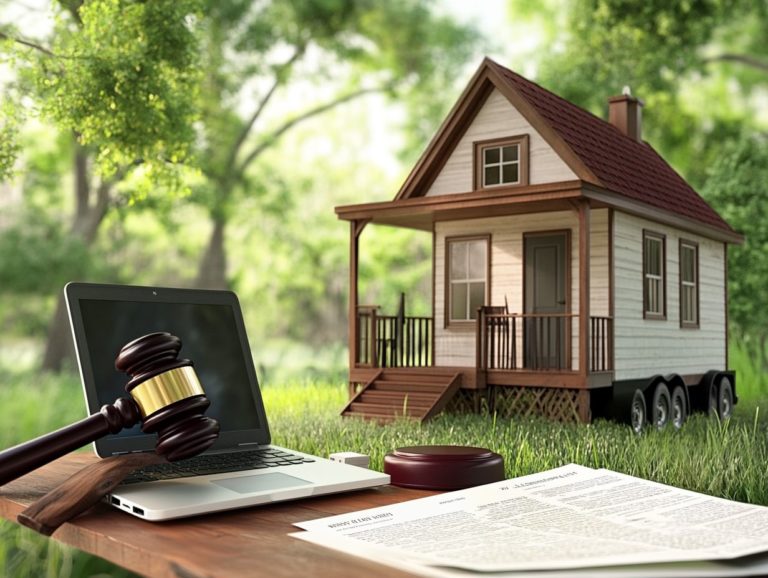Tiny House Regulations and Building Practices
Tiny houses represent more than just a fleeting trend. They embody a lifestyle choice that champions simplicity, sustainability, and efficiency.
This guide delves into the nuances of tiny house living. It covers everything from the essential zoning laws and building codes that dictate their construction to the innovative materials and design techniques that set them apart.
You’ll discover sustainable practices that enhance eco-friendliness. You’ll also gain valuable tips for adapting to life in a smaller space.
Whether you’re contemplating building your own tiny home or simply intrigued by the movement, this guide offers insights to help you navigate your tiny house journey with confidence.
Contents [hide]
Key Takeaways:
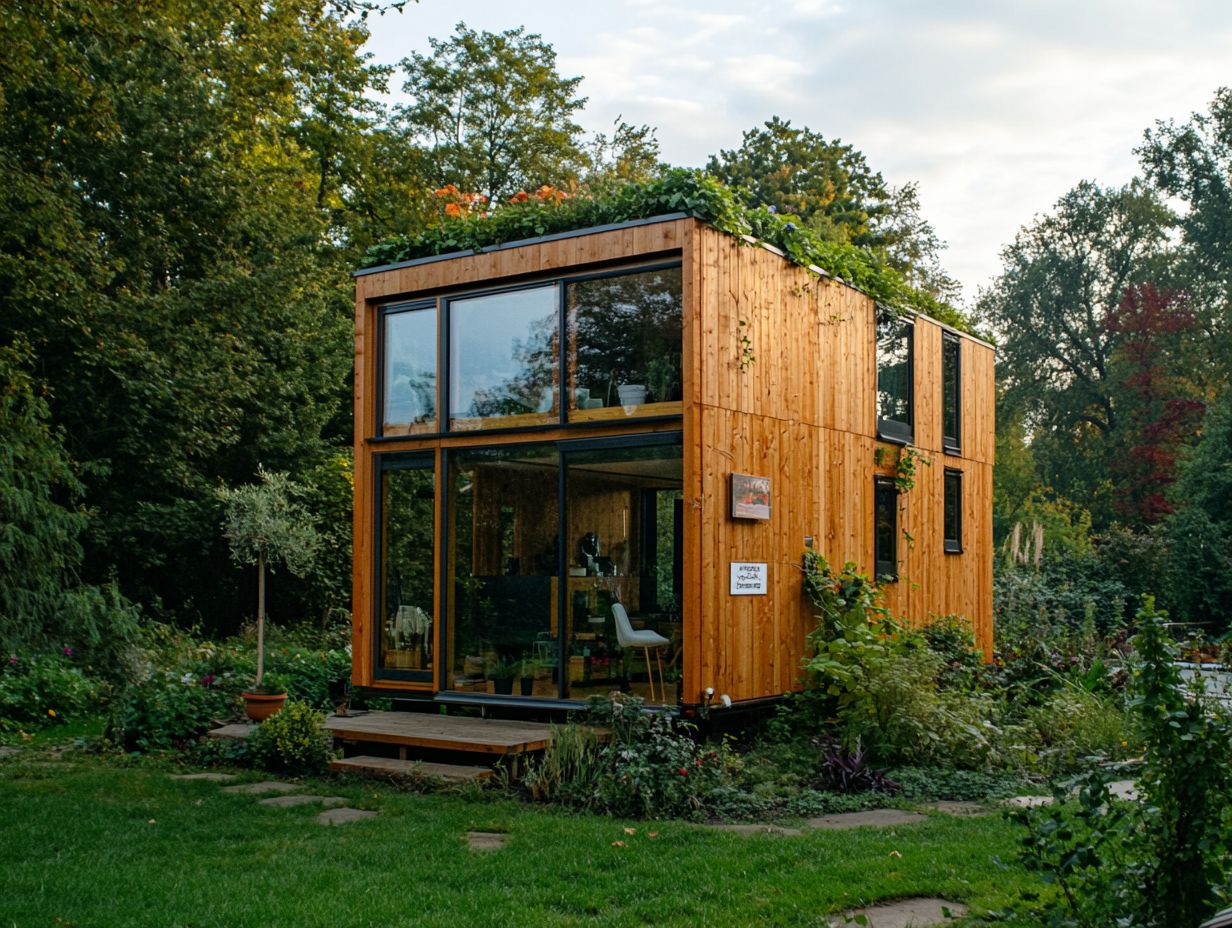
- Tiny houses are an increasingly popular housing option, but they are subject to regulations and building codes just like any other home.
- When building a tiny house, it is important to explore exciting materials, clever techniques, and innovative designs to ensure a safe and efficient structure.
- Sustainable practices, such as using eco-friendly materials and minimizing energy usage, can make tiny houses even more environmentally friendly.
Defining Tiny Houses and Their Appeal
Tiny houses embody a transformative approach to affordable housing. They offer you and your family the opportunity to embrace sustainable living while reducing your impact on the environment.
This movement has gained significant traction across the United States, particularly in places like Maryland. Residents are increasingly recognizing the myriad benefits of tiny house living.
The allure of tiny homes transcends their environmental perks. They also cultivate a lifestyle that champions simplicity, cost-effectiveness, and a deeper connection to both nature and community.
As the Tiny House Movement gains momentum, these compact dwellings typically ranging from 100 to 400 square feet encourage a minimalist way of life. They also raise important questions about where you can live in a tiny home, making it essential to explore tiny house residency legal insights. They prompt you to reconsider your consumption habits and declutter your surroundings.
The eco-friendly benefits are substantial. These homes often incorporate sustainable materials, renewable energy sources, and efficient design principles that significantly cut down on utility costs and energy consumption.
With the desire for smaller living spaces harmonizing with a growing awareness of environmental challenges, many individuals are embracing the tiny house lifestyle. It serves as a practical solution for achieving both financial freedom and conscientious living.
Regulations for Tiny Houses
Understanding the regulations surrounding tiny houses is essential for anyone looking to build one in Maryland. Each county, from Montgomery to Baltimore and Garrett, has its own specific zoning laws and building codes that you must adhere to.
These regulations define the legal framework for constructing tiny houses. They determine whether they fall under residential structures or accessory dwelling units (ADUs).
By navigating these rules carefully, you can set yourself up for a successful and compliant tiny house project. This ensures alignment with the International Residential Code (IRC) while also contributing positively to the community within existing zoning ordinances.
Start your tiny house journey today by understanding tiny house regulations in urban areas and embrace a simpler, more fulfilling lifestyle!
Zoning Laws and Building Codes
Zoning laws and building codes are crucial in determining whether tiny houses can serve as permanent residences, particularly in urban areas where every square foot counts. These regulations dictate minimum square footage, allowable structure types, and specific requirements for sustainable living solutions, such as eco-friendly tiny homes (which means homes using resources sustainably) or RVs used as permanent dwellings. If you’re considering diving into the Tiny House Movement, it’s vital to understand these laws. They can significantly shape the design and placement of tiny homes within different communities.
In Maryland, for example, these regulations can vary dramatically between urban and rural settings. Urban areas tend to impose stringent zoning laws aimed at maximizing land use and preserving property values. In contrast, rural regions might offer more flexibility, allowing for creative designs that embrace sustainable living. For those interested in tiny houses, understanding the legal status of tiny houses is crucial.
Take, for instance, the classification of a tiny house as an accessory dwelling; rural jurisdictions might permit smaller homes without the same exacting dimensional requirements. This distinction not only influences the immediate placement of tiny residences but also signals a larger societal shift toward recognizing sustainable options that support eco-friendly practices. For more insights, consider looking into understanding tiny house land use laws.
Embarking on this journey transforms your lifestyle into an exciting adventure and a complex challenge.
Permitting and Inspection Processes
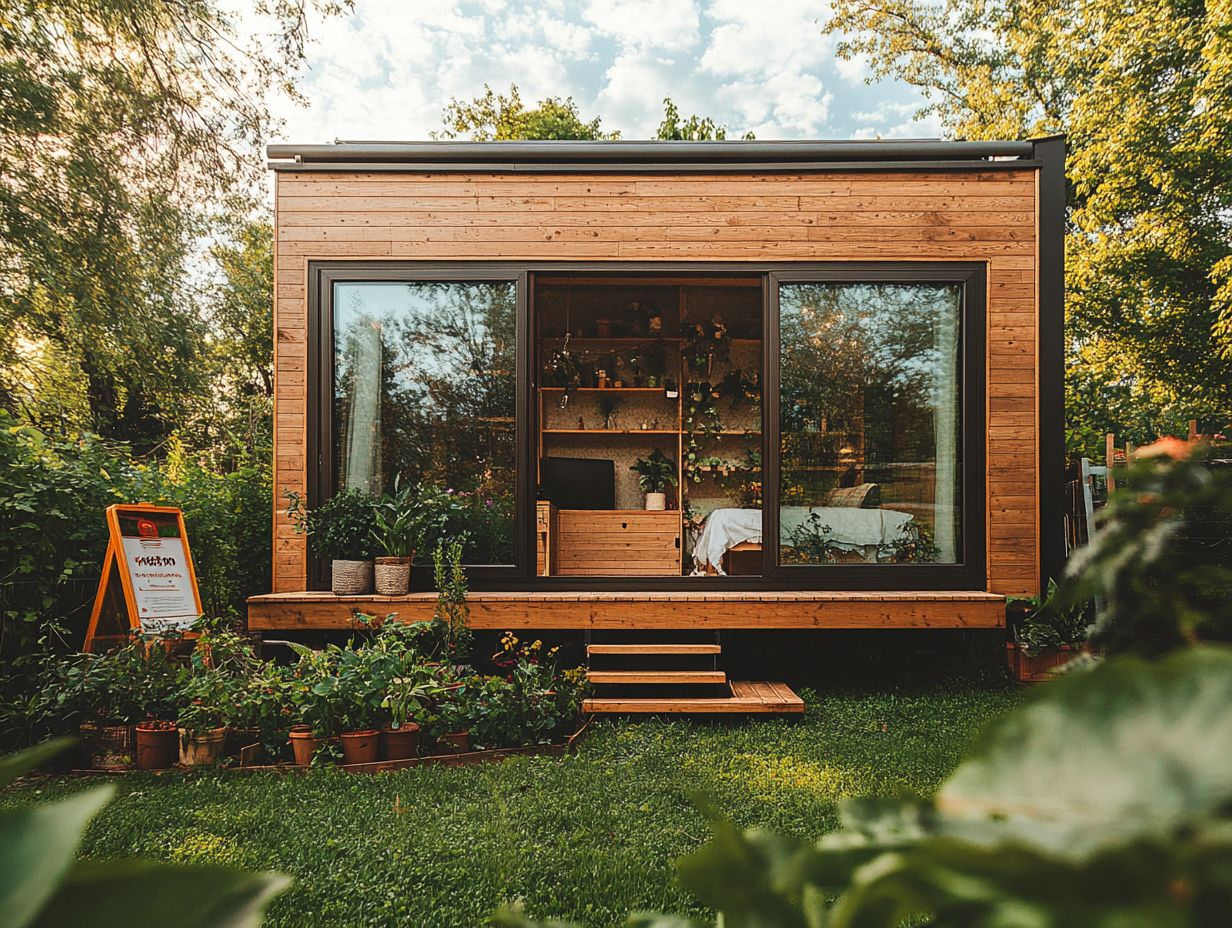
Navigating the permitting and inspection processes is an essential step for you if you re looking to build a tiny house within the regulatory frameworks established by counties like Montgomery County and Baltimore County. These procedures are designed to ensure that tiny houses meet construction standards, zoning laws, and safety protocols. Ultimately, they contribute to the sustainability and habitability of these unique residential structures. Understanding the nuances of these processes can lead to a smoother experience for you as a builder and help foster a more integrated tiny house community.
Here are the essential steps to follow:
- Familiarize yourself with local zoning regulations, as these dictate where your tiny house can be situated and any size limitations you may encounter. Understanding tiny house zoning laws is essential for this step.
- You’ll typically need to submit architectural plans to the planning department for approval, followed by securing the necessary building permits.
- Inspections are crucial at various stages of construction, ensuring that your structure meets established safety benchmarks.
Compliance boosts your personal safety and builds community trust. Master these steps for a successful tiny house build and foster a responsible culture!
Building a Tiny House
Building a tiny house requires a meticulous selection of materials, techniques, and design elements that resonate with the ideals of sustainable living and eco-friendliness. You ll find that every decision, from the insulation you choose to the energy-efficient appliances you incorporate, plays a significant role in enhancing the efficiency and comfort of your space.
Understanding local regulations around tiny house construction is essential, as these guidelines can significantly impact everything from the foundation of your structure to its layout. For a detailed overview, refer to tiny house regulations: a state-by-state guide. This ensures you comply with all necessary building codes and zoning laws.
Materials, Techniques, and Design Considerations
When you’re constructing a tiny house, the choice of materials becomes very important, as they influence not just the aesthetics but also the eco-friendliness of your dwelling.
By opting for sustainable materials like reclaimed wood and energy-efficient insulation, you can significantly reduce the overall environmental footprint of your tiny home.
Incorporating innovative building techniques, such as modular construction or Accessory Dwelling Units (small homes on the same property as a main house), adds both functionality and versatility to your design. Additionally, it’s important to be aware of tiny house residency laws you should know to ensure compliance with local regulations.
Focusing on natural finishes think bamboo flooring or straw bale walls further enhances the sustainable ethos of tiny living. Pairing these choices with rainwater harvesting systems and solar panels not only creates a comfortable space but also fosters a sense of self-sufficiency.
Consider thoughtful design elements like multifunctional furniture and open floor plans to maximize usable space while maintaining that cozy vibe. By embracing eco-friendly materials and groundbreaking building strategies, you can create an amazing tiny home that beautifully blends style and sustainability. Before you start, it’s wise to understand what to know about tiny house regulations, ensuring you make the most of every square foot!
Sustainable Practices for Tiny Houses
Sustainable practices lie at the very core of the Tiny House Movement, highlighting green practices that effectively minimize waste and promote efficient resource utilization.
By incorporating elements like solar panels and composting toilets, you not only elevate the livability of tiny houses but also align yourself with the burgeoning trend of sustainability and responsible living.
Embracing green technologies and mindful lifestyle choices allows you to significantly reduce your ecological footprint while savoring the advantages of a minimalist lifestyle.
Eco-Friendly Options and Tips
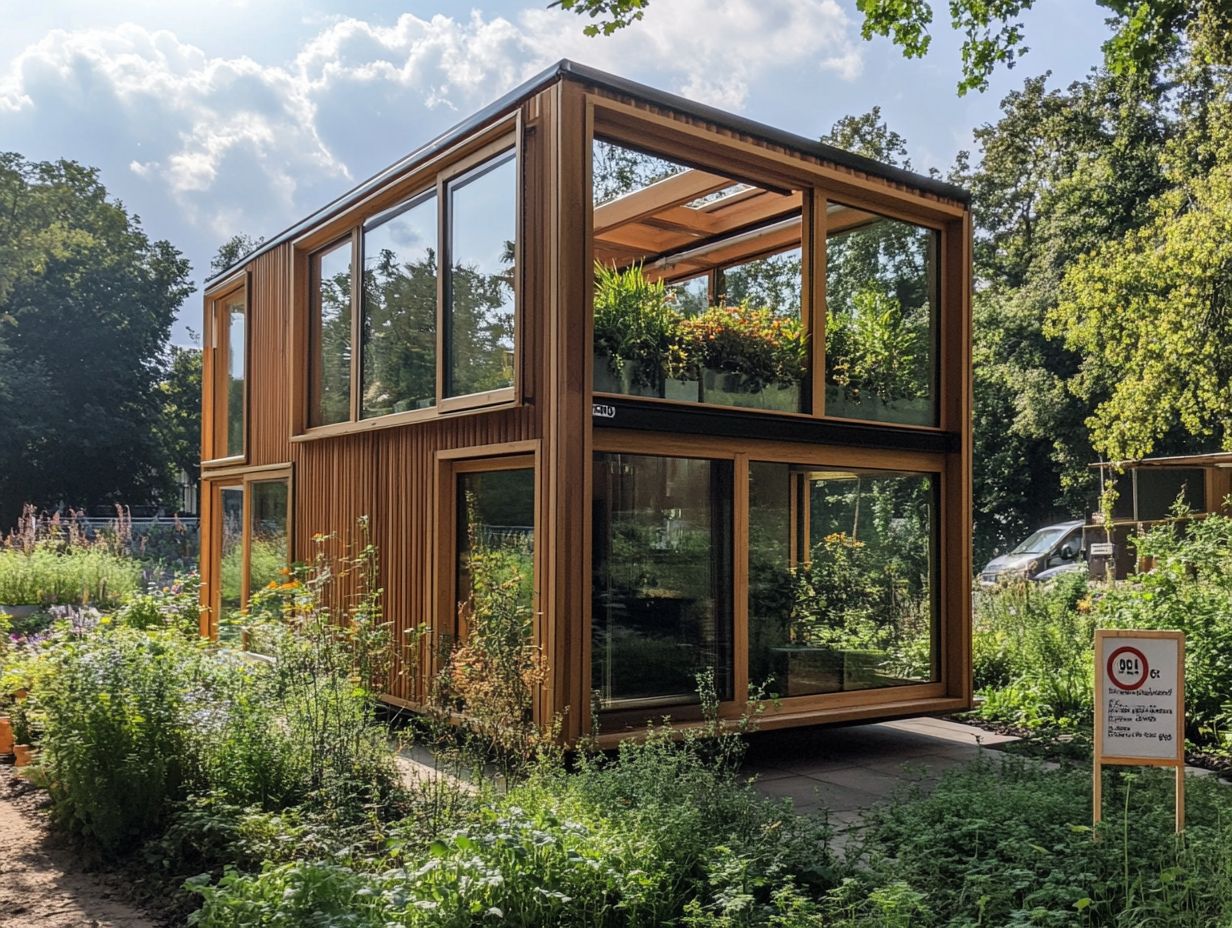
Choosing eco-friendly options in your tiny house design and construction can significantly elevate the sustainability of your living space, all while promoting comfort and environmental responsibility.
By using green technologies like rainwater harvesting systems, solar panels, and energy-efficient appliances, you ll not only make your home more self-sufficient but also diminish your reliance on external resources.
Incorporating sustainable practices, such as using low-VOC materials (materials that release fewer harmful chemicals into the air) and non-toxic finishes, will further cultivate a healthier living environment.
As you explore your options, consider alternative insulation materials like sheep’s wool or straw bales, which offer exceptional thermal performance and are biodegradable.
To boost your energy efficiency, think about integrating smart home technology that monitors and controls energy usage this gives you the power to make informed decisions about your consumption.
Opting for reclaimed wood in your flooring or cabinetry not only reduces waste but also infuses your tiny home with unique character and warmth. Embracing these eco-friendly choices contributes to a lower carbon footprint and fosters a lifestyle that harmonizes beautifully with the principles of the Tiny House Movement. To ensure your project aligns with local regulations, it’s essential to understand DIY tiny house building codes, emphasizing simplicity and sustainability.
Living in a Tiny House
Living in a tiny house offers you unique challenges and opportunities that inspire a reevaluation of your relationship with material possessions and space.
This lifestyle, defined by minimalism and sustainability, nurtures a deeper connection to your community and the environment.
Tiny house communities like Liberty Village and Blue Moon Rising showcase this movement, creating supportive networks for individuals dedicated to sustainable living and resource sharing within a smaller physical footprint.
This lifestyle not only transforms your home but also enriches your life.
Adjusting to a Small Space and Lifestyle
Adjusting to a small space requires a shift in how you think, as you learn to prioritize essentials and let go of unnecessary clutter.
Living in a tiny house encourages you to live sustainably, emphasizing being smart with resources and a deeper connection with your community. However, it’s important to be aware of potential challenges, such as zoning laws. Exploring tiny house zoning issues can provide valuable solutions and tips. This transition fosters personal growth and aligns you with a broader movement toward eco-friendly living that many tiny house enthusiasts passionately champion.
For many, the journey starts with a thorough decluttering process, where every item is scrutinized for its genuine value in your life. You ll often come across tips on maximizing storage and utilizing multi-functional furniture ideas that help you keep your space organized while still feeling like home.
In tiny house communities, friendships blossom through shared experiences and collaborative efforts, from organizing workshops on solar power solutions to exchanging gardening tips. This interdependence creates a supportive atmosphere, where you uplift one another, cultivate shared dreams, and reap the rewards of pooled resources, further enriching your tiny living experience.
Frequently Asked Questions
What are the regulations for building a tiny house?
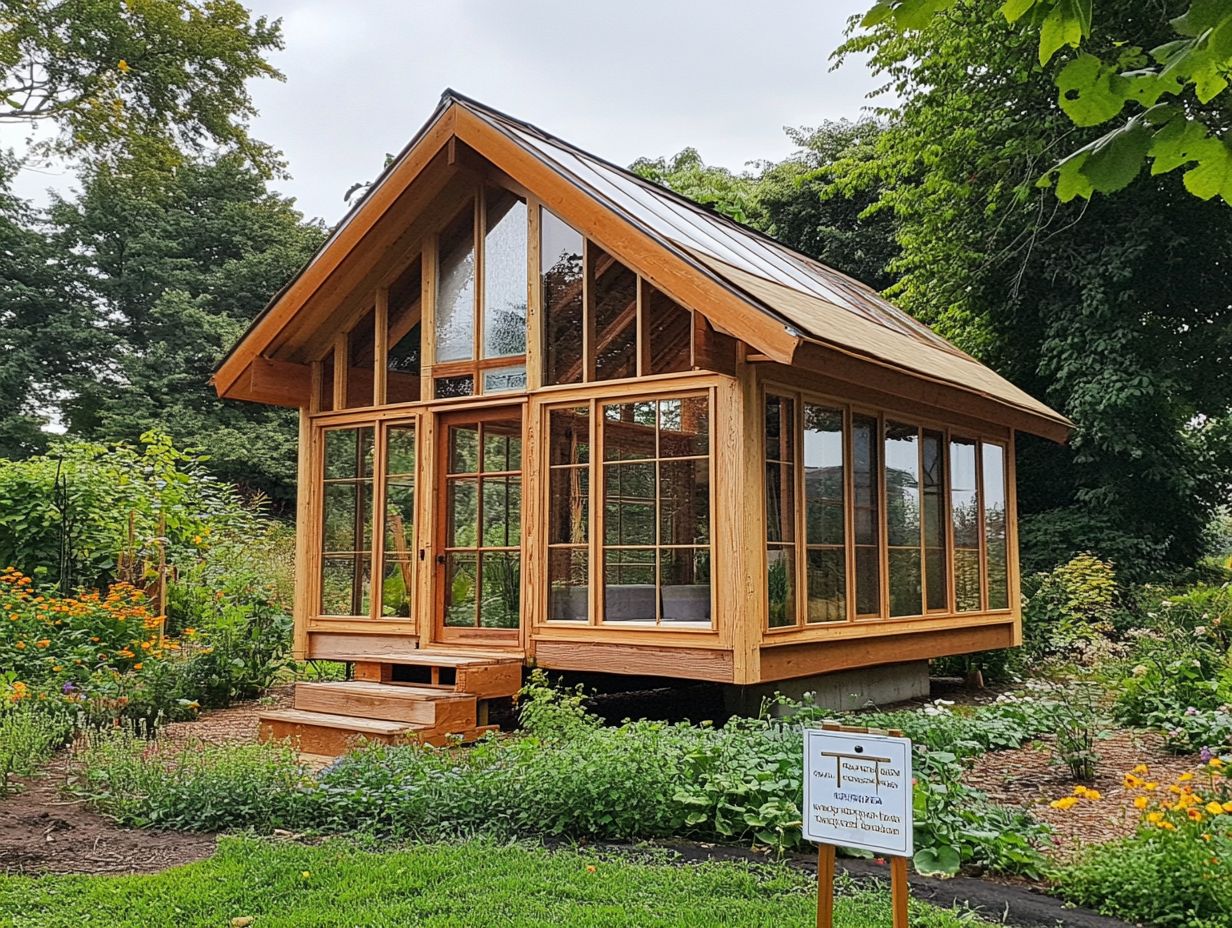
Tiny house regulations vary by location. Make sure to research and comply with local building codes and zoning laws.
Can I legally live in a tiny house?
It depends on where you live. Some areas have specific regulations for tiny house living, while others may not allow it at all. Research your local laws and speak with professionals to ensure legality.
Are there size restrictions for tiny houses?
Size limitations for tiny houses also depend on location. Some areas have specific restrictions, while others do not. Make sure to research local regulations.
Do tiny houses require building permits?
Building a tiny house usually needs a permit. Research and follow all necessary steps to obtain a permit in your area.
What are the advantages of building a tiny house?
There are several advantages to building a tiny house, including lower costs, less maintenance, and a smaller ecological footprint. It can also be a great way to downsize and simplify your lifestyle.
Are there specific building practices for tiny houses?
Yes, certain building practices and techniques are commonly used in constructing tiny houses. These include utilizing multi-functional furniture, maximizing vertical space, and using lightweight materials. Research and consult with professionals for guidance on building a safe and efficient tiny house.

